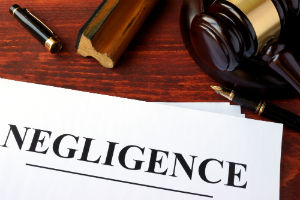Proving Negligence in a Personal Injury claim
 If you have been injured because of another’s negligence, you may have legal options to pursue compensation.
If you have been injured because of another’s negligence, you may have legal options to pursue compensation.
However, you must prove the other party was, in fact, negligent and at fault for causing your injuries. Proving negligence in a personal injury claim can be difficult and requires enough evidence to construct a viable claim.
An experienced Sacramento personal injury attorney can help you identify the at-fault party and collect evidence to prove his or her negligence caused your injuries.
When Can I File a Personal Injury Claim?
In order to file a personal injury claim, the victim (plaintiff) must be able to prove that the at-fault party (defendant) was negligent and caused his or her injuries. There are four defining elements that must be present in cases of negligence for a personal injury claim to be valid.
These elements are:
1. Duty
The defendant’s duty refers to his or her responsibility to ensure the safety of others. For example, all motorists have an obligation to follow the rules of the road and prevent car accidents.
In other instances, a relationship may exist between the defendant and the plaintiff that places a legal obligation to ensure his or her safety. This type of relationship exists in premises liability claims where the property owner is obligated to act in a certain manner that ensures the safety of guests and visitors on his or her property. The owner of the property has an established duty to fix any known dangerous conditions on the property or warn others of its presence to avoid injury.
Similarly, a medical professional has a doctor-patient relationship with a patient that requires that he or she act as others with similar training would under similar circumstances.
2. Breach of Duty
A breach of duty occurs when the defendant fails to exercise reasonable care or act in a manner that a “reasonably prudent person” would have under similar circumstances. The term “reasonably prudent person” refers to how an average person would act in the same situation and under similar circumstances as the defendant did when the accident occurred.
It must be proven that a reasonably able person placed in the defendant’s position at the time of the accident would have acted differently.
3. Causation
Causation is determined by whether the defendant’s actions or inaction directly caused harm to the plaintiff. The plaintiff must show that the defendant’s negligence is the sole reason for the damages he or she suffered, and that this would not have happened if the defendant had acted differently.
For example, if a Sacramento car accident occurred because the defendant ran a red light, the plaintiff could argue that his or her injuries were caused by the defendant because they would not have occurred if the defendant had not run the red light and struck his or her vehicle.
4. Damages
The fourth element needed to prove negligence is showing the defendant’s actions caused you to suffer actual damages as result of his or her failure to exercise reasonable care. Actual damages can include any medical expenses related to the accident, property damage you suffered or loss of income caused by the injury.
To file a personal injury claim, you must be able to prove that you suffered a physical injury and/or financial loss following the accident, for which a court can compensate you.
Sacramento Personal Injury Attorneys
If you or someone you love has been injured in an accident caused by another’s negligence, you may have legal options. At the Arnold Law Firm, we are dedicated to protecting the rights of injury victims and helping them recover the compensation they deserve.
Contact us if you have been hurt in an accident. Our Sacramento personal injury attorneys will provide you with a free consultation to identify the at-fault party and determine how his or her negligence caused your injury.
We work on a contingency fee basis, which means there are no upfront fees for our services. We only require you pay us if we recover compensation on your behalf.
Fill out a Free Case Evaluation form to get started today.
